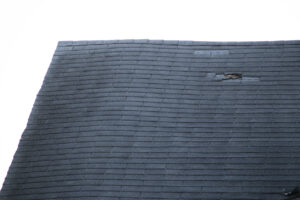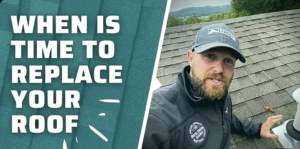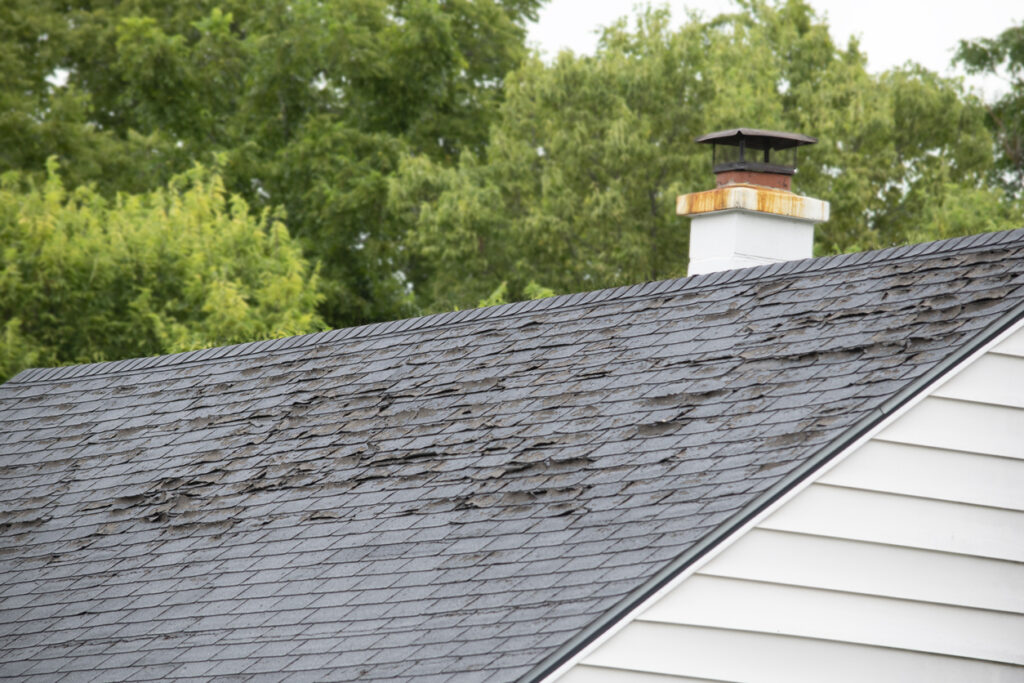How to Determine if Your Asphalt Roof Has Reached the End of Its Lifespan
Asphalt roofs are a popular roofing option here in West Michigan. They are durable, long-lasting, and require minimal maintenance. However, like all roofing materials, asphalt roofs have a lifespan. Over time, they can become damaged, worn, and less effective at protecting your home from the elements.
It can be difficult to know when your asphalt roof has reached the end of its useful life. So, how do you know when that time is? Do you wait until you have signs of water leaking into your attic? No way!
Some signs of damage may be obvious, while others may be more subtle. Knowing what to look for can help you determine whether it’s time to replace your roof and avoid costly repairs down the road.
In this article, we will discuss some common signs that your asphalt roof is at the end of its useful life. We will explore the various types of damage that can occur, how to identify them, and what steps you can take to address them. By the end of this article, you will have a better understanding of how to maintain your asphalt roof and keep your home safe and protected for years to come.
Signs of Wear and Tear
An asphalt roof is a durable and long-lasting roofing solution, but it does not last forever. Here are some signs that indicate the roof has reached the end of its useful life:
Missing or Damaged Shingles
Missing or damaged shingles are a clear sign of roof wear and tear. Over time, shingles can become loose, crack, or break, leaving the roof vulnerable to leaks and other damage. If you notice any missing or damaged shingles, it’s important to have them replaced as soon as possible.
Cracks or Blisters on the Surface
Cracks or blisters on the surface of the roof are another indication that the roof is nearing the end of its useful life. These can be caused by a variety of factors, including exposure to extreme temperatures, UV rays, and moisture. If left untreated, cracks and blisters can lead to leaks and other damage.
Bald Spots or Granule Loss
Bald spots or granule loss on the surface of the shingles are a sign that the roof is aging. The granules on the surface of the shingles protect the roof from UV rays and other environmental factors. When the granules start to wear away, the roof becomes more vulnerable to damage. If you notice bald spots or granule loss on your roof, it’s time to start thinking about a replacement.
Sagging or Buckling of the Roof

Sagging or buckling of the roof is a serious sign of wear and tear. This can be caused by a variety of factors, including age, water damage, and structural issues. If you notice any sagging or buckling, it’s important to have the roof inspected by a professional as soon as possible.
Age of the Roof
Knowing the age of an asphalt roof is crucial in determining whether it is at the end of its useful life. This section will cover how to determine the age of your roof and the average lifespan of an asphalt roof.
Determining the Age of the Roof
There are a few ways to determine the age of your asphalt roof. The first and most obvious is to check the installation date. If you have the paperwork from when the roof was installed, it should have the installation date listed. If you don’t have the paperwork, you can check with the previous homeowner or contact the roofing company that installed the roof.
If you don’t have access to the installation date, you can still estimate the age of the roof by looking for signs of wear and tear. A roof that is 10-15 years old will start to show signs of aging, such as curling or missing shingles, granule loss, and discoloration. A roof that is 20-25 years old will have more obvious signs of wear and tear, such as cracked or missing shingles, leaks, and sagging.
Average Lifespan of an Asphalt Roof
The average lifespan of an asphalt roof depends on a few factors, such as the quality of the materials used, the installation process, and the climate in which the roof is located. Here is West Michigan, roofs are subject to all forms of weather and temperature which can drag down the expected lifespan of your shingles.
On average, an asphalt roof can last anywhere from 15-25 years. However, some roofs can last up to 30 years with proper maintenance and care.
It’s important to note that the lifespan of an asphalt roof can be significantly reduced if it is exposed to harsh weather conditions, such as extreme heat or cold, heavy rain, or high winds. Additionally, poor installation or lack of maintenance can also shorten the lifespan of a roof.
When determining if your asphalt roof is at the end of its useful life, it’s important to take into account the age of the roof, as well as any signs of wear and tear. If your roof is approaching the end of its lifespan or is showing signs of significant damage, it may be time to consider replacing it.
Maintenance History
Regular maintenance is important to extend the life of an asphalt roof. A well-maintained roof can last up to 25 years, while a neglected one may only last half as long. It is recommended to have a professional inspection every three years to identify and address any issues before they become major problems.
Regular Maintenance
Regular maintenance includes cleaning gutters, removing debris, and keeping the roof free of moss and algae. It is also important to inspect the roof for any damage, such as cracked or missing shingles. Regular maintenance can prevent minor issues from becoming major problems and prolong the life of the roof.
Neglected Maintenance
Neglected maintenance can lead to major problems, such as leaks and water damage. If the roof is neglected for too long, it may be beyond repair and need to be replaced. Signs of neglected maintenance include cracked or missing shingles, moss and algae growth, and debris buildup. If any of these signs are present, it is important to have a professional inspection to determine the extent of the damage and the best course of action.
Environmental Factors
When determining if an asphalt roof is at the end of its useful life, it’s important to consider environmental factors that can affect its condition. Here are some key factors to keep in mind:
Climate Conditions
The climate in which a home is located can have a significant impact on the lifespan of an asphalt roof. Extreme temperature fluctuations, high winds, hail, and heavy rainfall can all cause damage over time. In areas with harsher climates, roofs may need to be replaced more frequently.
Exposure to Sunlight and Heat
Exposure to sunlight and heat can cause asphalt shingles to deteriorate over time. UV rays from the sun can cause the shingles to become brittle and crack. In addition, high temperatures can cause the shingles to warp and curl, which can lead to leaks and other damage.
Trees and Debris
Trees and debris can also contribute to the deterioration of an asphalt roof. Overhanging branches can scratch and damage shingles, while falling leaves and other debris can clog gutters and trap moisture on the roof’s surface. This can lead to water damage and other issues that can shorten the lifespan of the roof. Read this article this article on how to keep those gutters clear and extend the life of your shingles.
By considering these environmental factors, homeowners can better understand the condition of their asphalt roof and determine if it’s time for a replacement.
Wrap up
By following the signs outlined in this article, homeowners can have a better understanding of when their asphalt roof is at the end of its useful life. It is important to note that while some signs may indicate that a roof needs to be replaced, others may be indicative of smaller issues that can be addressed with repairs. Homeowners should always consult with a professional roofing contractor such as West Michigan Tree and Gutter to assess their roof’s condition and determine the best course of action.
Remember, a well-maintained asphalt roof can last up to 20 years or more. Regular inspections, maintenance, and repairs can help prolong the life of a roof and prevent costly damage to a home’s interior. Homeowners should be proactive in caring for their roofs and addressing any issues as soon as they arise.
Replacing a roof can be a significant investment, but it is one that can provide peace of mind and protect a home for many years to come. By keeping an eye out for the signs of an aging asphalt roof, homeowners can make informed decisions about when it is time to replace their roof and ensure that their home remains safe, secure, and protected from the elements.
If we missed anything and you have additional questions we may have missed in this article, we found a fantastic video on this topic that you’ll find super informative. Watch it here.

If you have further concerns or questions, please fill out the form on this site and we will have a local professional reach out to you within 24 hours.

